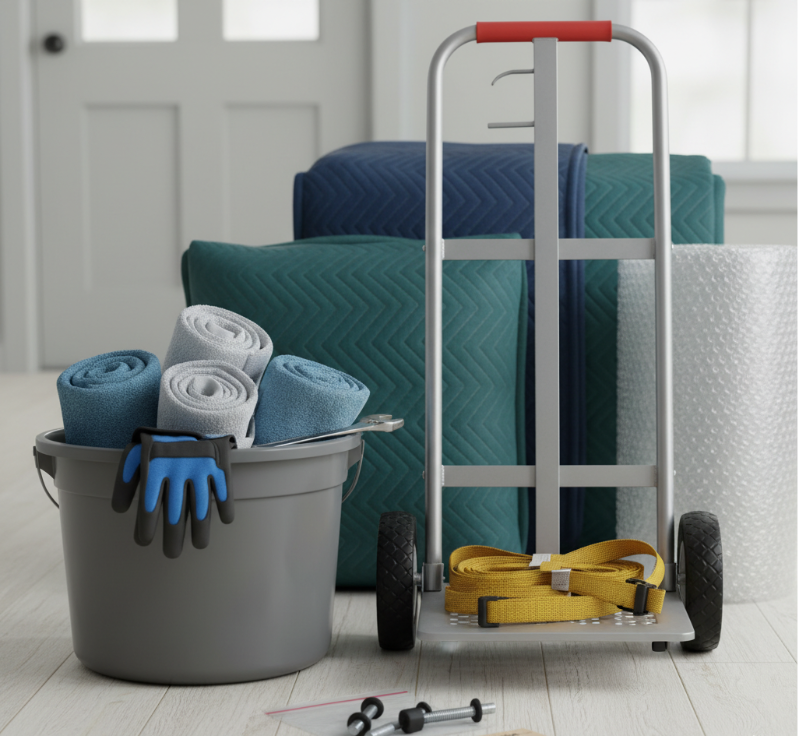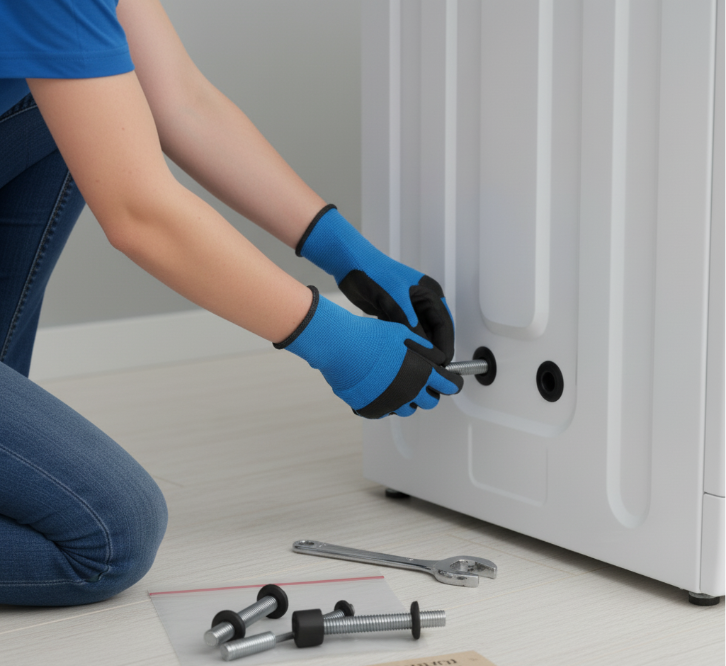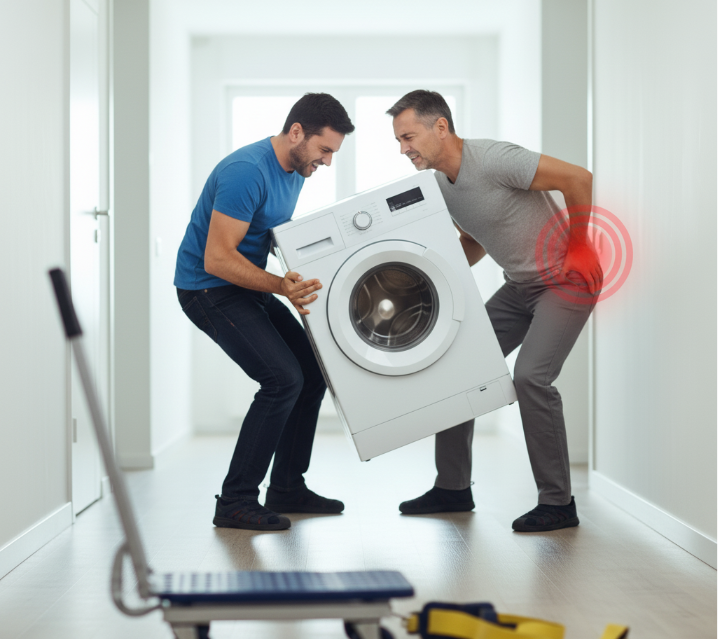A washing machine is heavy, awkward, and full of delicate parts that need to be handled with care.
The good news? With the right preparation, tools, and method, you can move a washing machine safely without breaking your back—or the machine. Whether you’re shifting it to another room or taking it across the country, this guide by your favourite Brisbane removalists will help you every step of the way.
To move a washing machine, first prepare it by emptying, cleaning, and disconnecting the power, water, and drain hoses. Then, secure the internal drum with transit bolts if you have them, wrap the machine in moving blankets, and load it upright onto an appliance dolly. Use the dolly to transport it, secure it tightly with straps in the vehicle, and keep it upright throughout the move.

Preparation is half the battle. You don’t want to be halfway through the move and realise you’re missing something crucial. Here’s what you’ll need:
If you don’t have transit bolts, don’t panic. You can still move your washing machine, but you’ll need to be extra careful with how you handle it.
The last thing you want is to move a washing machine that still has water or a forgotten pair of socks inside.
This makes the move cleaner, easier, and safer.
Power first. Always switch the washing machine off at the wall socket and unplug it. Wrap the cord and tape it to the back of the machine so it doesn’t drag.
Water second.
Drain third. Remove the drain hose from its pipe connection and let any remaining water drain into the bucket.
Pro tip: Keep all your small parts—screws, bolts, and hoses—in a labelled bag so you don’t lose them.

The washing machine drum is delicate. If it shifts during transport, it can break suspension rods or damage internal parts.
It’s not as effective as transit bolts, but it’s better than leaving the drum unsecured.
Protect your machine and your home.
This protects the machine, your walls, and your floors during the move.
This is where teamwork counts. A washing machine is not a one-person job.
Important: Always keep the washing machine upright. Laying it flat can cause oil leaks or damage to the motor.
This part can be stressful. Door frames, corners, and stairs are the usual trouble spots.
Take it one step at a time—literally.
Once you’re outside, it’s time to get the washing machine into the vehicle.
And yes, one last reminder: keep it upright at all times.
When you arrive at your destination:
If all goes well, your machine is ready for its first load of laundry in the new home.
Here’s the truth: moving a washing machine is possible as a DIY job—but not always advisable.
Choose DIY if:
Hire professionals if:
At Shift Buddies, we move washing machines all the time. Our team brings the right equipment, transit bolts, protective wraps, and most importantly—experience. We make sure your washing machine (and your back) stays safe.

Moving a washing machine solo isn’t ideal, but sometimes you may have no choice—perhaps you’re rearranging your laundry room, or help isn’t available on moving day. If you need to handle it yourself, preparation and equipment are your best friends.
To move a washing machine by yourself, disconnect the power and water supply, drain the hoses, secure the drum with transit bolts, and wrap the machine in blankets. Use an appliance dolly to keep it upright, tilt carefully, and wheel it to the moving vehicle. Avoid lifting it entirely on your own, as washing machines are heavy and awkward.
A washing machine is one of the trickiest appliances to move, but with preparation and the right method, it can be done safely.
If you want to skip the stress, leave it to professional removalists. At Shift Buddies, we specialise in hassle-free appliance moves across Australia. From washing machines to entire households, we’ve got you covered.
Because moving is hard enough—you shouldn’t have to wrestle with a 90-kg washing machine on top of it.
If you don’t have the original transit bolts, you can still move your washing machine—but you’ll need to improvise carefully. Place towels or soft blankets inside the drum to limit movement, and handle the machine as gently as possible. This won’t provide the same level of protection as transit bolts, but it reduces the risk of damage. At Shift Buddies, we always carry spare equipment to make sure the drum stays safe during transit.
No. A washing machine should always be kept upright. Laying it on its side can cause oil leaks, misalignments, or even internal damage to the motor and drum suspension.
On average, hiring professional removalists to move a washing machine in Australia costs between $150–$300, depending on distance, access (stairs/elevators), and additional services like disconnection and installation.
Yes, two people can lift a washing machine, but it’s not easy. Most machines weigh between 60–90 kg, and they’re bulky to grip. If you and a helper decide to lift it, make sure you bend your knees (not your back), keep the machine upright, and use lifting straps or a trolley wherever possible. At Shift Buddies, we always recommend using an appliance dolly rather than relying on sheer muscle—it’s safer for both you and the machine.
In most cases, no—a washing machine won’t fit in a standard car. They’re too tall and wide to slide into a regular boot or back seat. You’ll need a van, ute, or small moving truck to transport it properly.
Front loaders need extra care because of their delicate drum system. Always start by draining and disconnecting the machine, then secure the drum with transit bolts if you have them. Wrap the washer in moving blankets, keep it upright on a dolly, and strap it securely in the moving vehicle. At Shift Buddies, we never lay a front loader on its side—keeping it upright is key to avoiding drum or motor damage.
No, it’s not recommended. When a washing machine is placed on its side, the internal suspension and motor oil can shift, which may cause long-term issues once you reinstall it. Always keep it upright, even if that means hiring a trolley or moving truck. Our Shift Buddies team has moved hundreds of washers, and upright transport is always the golden rule.
LOCATIONS & SUBURBS